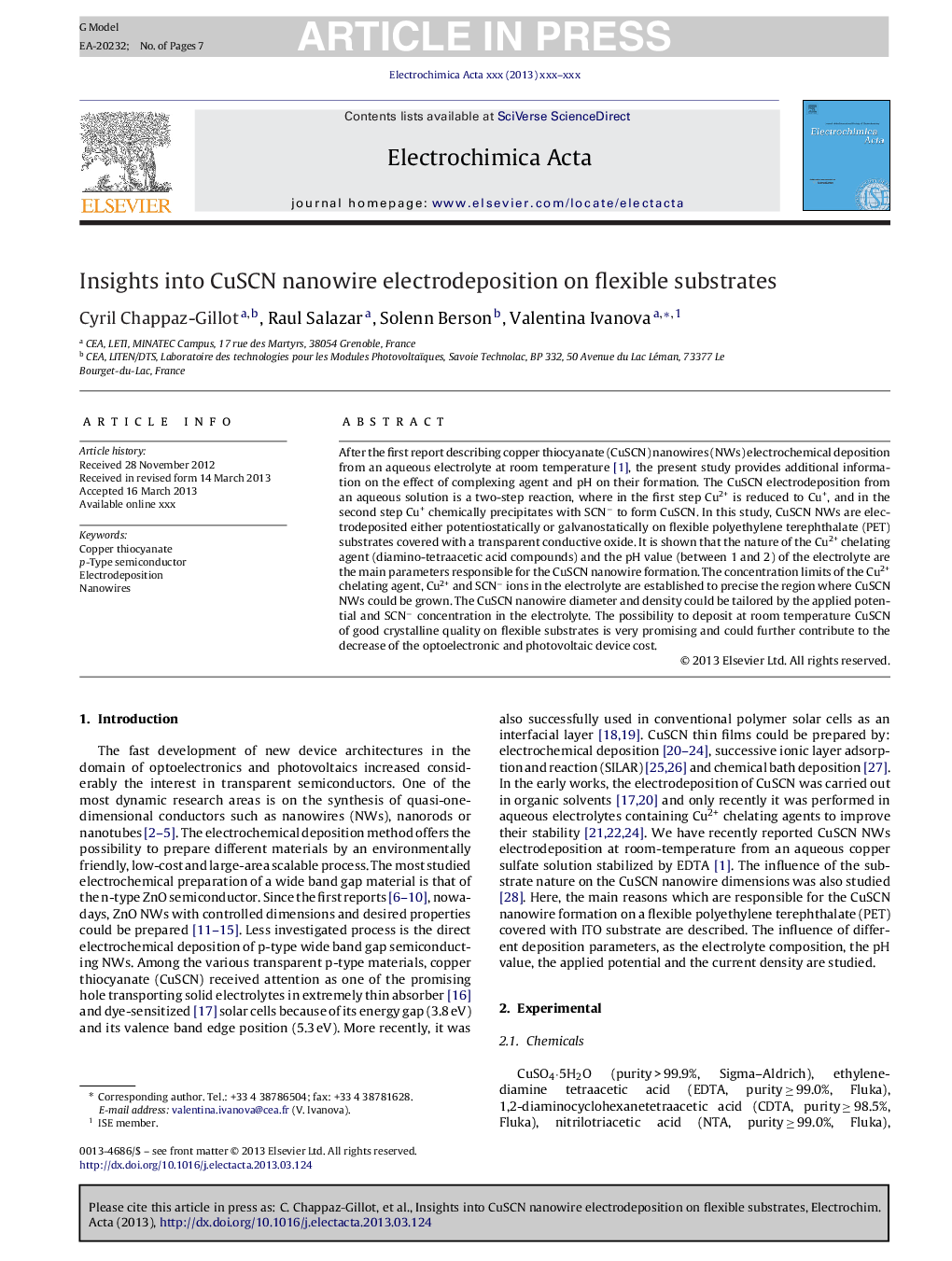| Article ID | Journal | Published Year | Pages | File Type |
|---|---|---|---|---|
| 6615589 | Electrochimica Acta | 2013 | 7 Pages |
Abstract
After the first report describing copper thiocyanate (CuSCN) nanowires (NWs) electrochemical deposition from an aqueous electrolyte at room temperature [1], the present study provides additional information on the effect of complexing agent and pH on their formation. The CuSCN electrodeposition from an aqueous solution is a two-step reaction, where in the first step Cu2+ is reduced to Cu+, and in the second step Cu+ chemically precipitates with SCNâ to form CuSCN. In this study, CuSCN NWs are electrodeposited either potentiostatically or galvanostatically on flexible polyethylene terephthalate (PET) substrates covered with a transparent conductive oxide. It is shown that the nature of the Cu2+ chelating agent (diamino-tetraacetic acid compounds) and the pH value (between 1 and 2) of the electrolyte are the main parameters responsible for the CuSCN nanowire formation. The concentration limits of the Cu2+ chelating agent, Cu2+ and SCNâ ions in the electrolyte are established to precise the region where CuSCN NWs could be grown. The CuSCN nanowire diameter and density could be tailored by the applied potential and SCNâ concentration in the electrolyte. The possibility to deposit at room temperature CuSCN of good crystalline quality on flexible substrates is very promising and could further contribute to the decrease of the optoelectronic and photovoltaic device cost.
Related Topics
Physical Sciences and Engineering
Chemical Engineering
Chemical Engineering (General)
Authors
Cyril Chappaz-Gillot, Raul Salazar, Solenn Berson, Valentina Ivanova,
